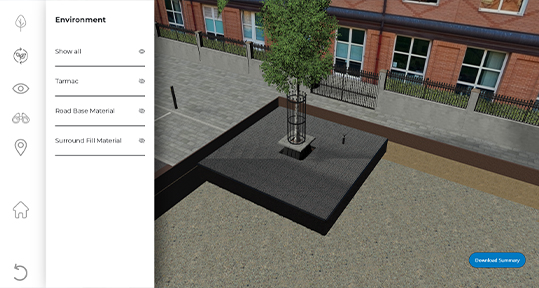What can we learn from our experiences of heat waves and what are the implications for creating and managing heat-resilient treescapes for the future?
These were the questions posed at this week’s event organised by the Trees and Design Action Group (TDAG) which took place online and in person in Birmingham. It was jointly delivered by TDAG, the RECLAIM network, Myerscough College and The Birmingham Institute of Forest Research (BIFoR).
Heat and the important role trees play.
Trees have a critical role to play in our urban environments during heatwaves, helping us to cope by providing shade and through a localised cooling effect on our surroundings. To fulfil their function and deliver these benefits, trees themselves need to be resilient to both the changing climate and to pests and diseases; whilst their survival depends on the availability of water.
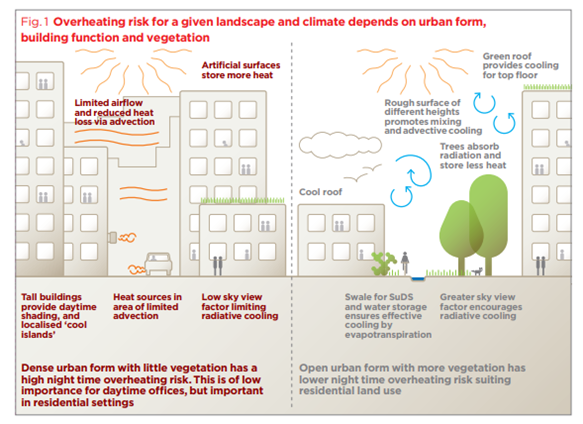
Event’s presentations
The event was chaired by Kathryn Moore, Professor of Landscape Architecture at Birmingham City University, who sits on the Natural England Landscape Panel and is behind the WMNP Lab an international think-tank for integrated landscape-led visioning and development that launched the West Midlands National Park in 2018.
The event introduced two cross-sectoral networks that span the world of blue-green infrastructure:
TDAG is a network that facilitates cross-sector & cross-disciplinary dialogue and projects promoting the role of urban trees. Dr Emma Ferranti, Associate Professor at the Department of Civil Engineering at the University of Birmingham, who co-facilitates the network, introduced TDAG and its wealth of resources.
The other cross-sectoral network represented was the RECLAIM (Reclaiming Forgotten Cities – Turning cities from vulnerable spaces to healthy places for people) Network. This cross-sector network, funded by several cross-disciplinary research councils (AHRC, NERC, UKRI, EPSR), brings together researchers from 4 universities and one institute. It aims to create a blue-green infrastructure community of practice whilst examining knowledge gaps around blue-green infrastructure effectiveness.
Dr Ferranti set the scene by reminding attendees that during the hot summer of 2022, the UK recorded the highest daily maximum temperature of 40.3 °C. This was not a one-off event. Climate change is making UK extreme weather more frequent, with the top ten hottest UK days on record all except one occurring in the last three decades, according to Met Office data
Over the course of the day, researchers and practitioners then delivered presentations on a range of topics. The quality of the content is a testament to the great work and reputation of the TDAG network within the sector.
“TDAG’s ambition is to ensure that research is used in practice and during this session we learned a great deal about what we already know, what we don’t know, and what we need to know as well as how we can improve practice and delivery and why it is so important that the right skills are brought into projects at the right time to close that ‘performance gap’”, says Sue James AA Dipl RIBA FICFor (Hon), convenor of the TDAG network.
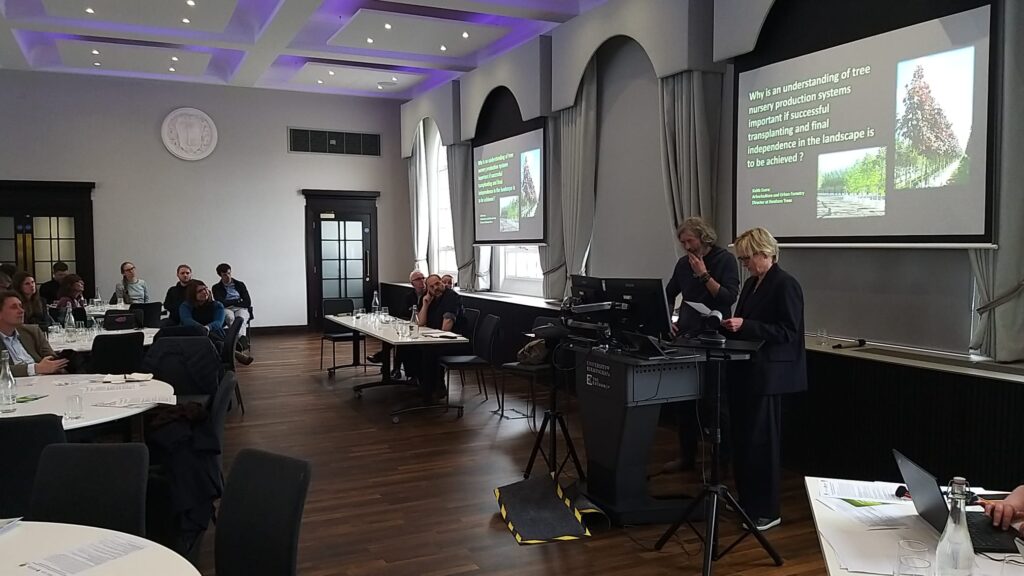
On the research side, we’ve heard about measurements of air temperature in Bristol taken since 2019 and a new study of tree species diversity in London. These were introduced by Dr Madalena Vaz Monteiro from Forest Research who reminded us of the mechanisms at play behind the urban heat island effect and why cities are hotter than rural areas.
The ecosystem services research conducted by the Royal Horticultural Society (RHS) was presented by Dr Lis Larsen, including its study of trees in gardens, which are considered to make up 30% of Urban space in the UK. RHS survey confirmed that trees planted by the public in their gardens are not necessarily those best resilient, with prunus topping the list. Whilst the most common reason trees were cut down in private gardens was a tree being too large for the space available, suggesting an inappropriate selection of tree species.
A study involving a collection of English oak acorns collected across 16 UK locations was introduced by Bartlett Tree Research, with a call out to attendees to post oak acorns for research. Trees are sweating to cool down (as people), attendees were told, and need water for that – a lack of water leads to trees experiencing stress. The speakers noted that whilst drought tolerance can be measured, with heat tolerance it is more challenging to do so.
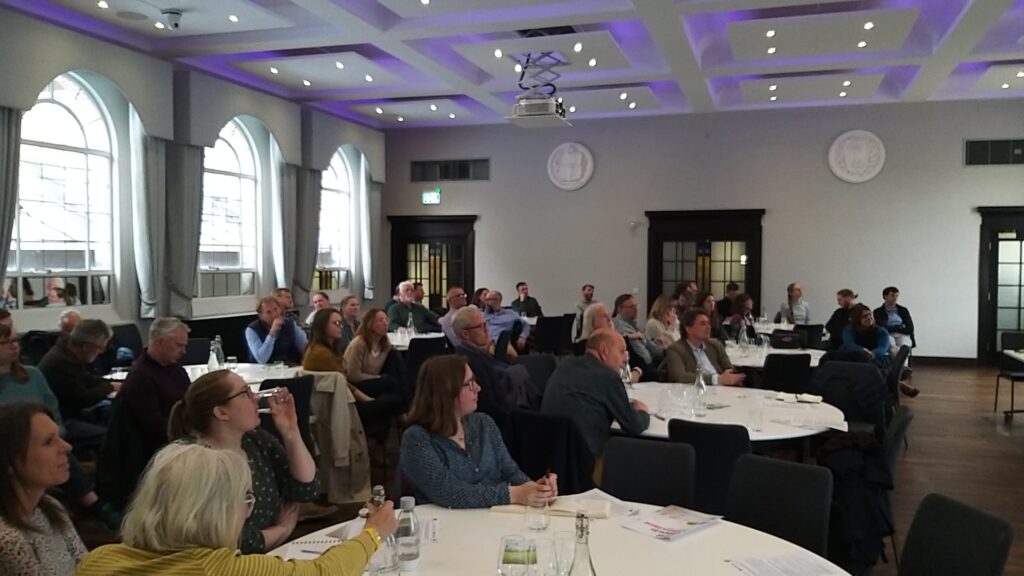
“We are planting trees into stressful situations, “ confirmed Dr Andy Hirons from Myerscough College, giving a real example from last year where the heatwave resulted in mass mortality of newly planted trees before explaining drivers of tree mortality such as prior droughts and structural damage. Trees experience complex stress not a single stress, we learned from Dr Hirons, with the changes in temperature projected for Europe will be causing trees extreme stress, quoting a recent Nature Journal article To improve selection decisions, Dr Hirons suggested these approaches: 1) trait-based assessment; 2) biogeographical data analysis; and 3) Ecophysiology (i.e. a biological discipline that studies the response of an organism’s physiology to environmental conditions).
Trees are often planted as part of schemes during development so how could we better incorporate the RIBA Plan of Works, DEFRA’s UK Plant Health Risk Register and BIM. That was the question raised by Dr Harry Watkins from St. Andrews Botanic Garden, highlighting a lack of user-friendly frameworks and tools and disciplinary silos. How could digital technology be harnessed to overcome these challenges when it comes to delivering green infrastructure schemes? Quoting an earlier study that found that only 27 of the green infrastructure schemes studied were delivered in accordance with plans approved by local authorities whilst over half of the schemes included plant species known to be invasive or have an invasive potential the speaker then then introduced a toolkit for multidisciplinary landscape design. A suggestion was made that submission of a biosecurity plan should be required by planning.
The performance gap, between what we know and what we deliver on the ground, is still of concern to Keith Sacre, Urban Forestry Director at Barcham Trees, despite this being “not a rocket science”. Keith’s presentation was peppered with nursery terms ( root shank, budding points, root girdling – to name a few) and contained ample examples of what can go wrong when it comes to tree nursey methods and root management The attendees were reminded that trees purchased from a nursery are not a finished product and were gives tips on introducing quality control when it comes to accepting trees supplied by a nursery. “How do we introduce care to the process and how to care?”, the presenter asked.
On the local authority side, we’ve heard from Leicester City Council and the impact of climate change on its stock of nearly 170,000 trees in the council’s ownership. This is not only about hot dry summers but also increased intensity of storms and winds, higher intensity rainfall events, and new pathogens spreading more quickly. Subsequently, the council is looking at the removal of vulnerable species no longer considered suitable to the changing environment, such as Lombardy poplars. A higher mortality rate for newly planted trees was observed, especially for whips where watering presents practical challenges. A controversial active travel scheme which will result in a loss of trees to accommodate a new cycle route has been given as an example of the need for joined-up thinking and to maximise benefits.
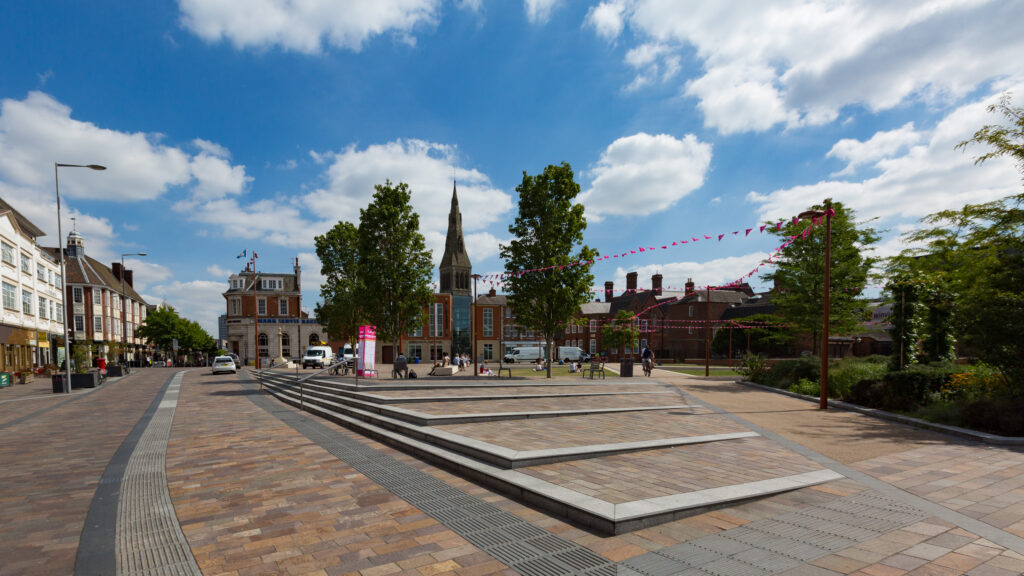
Two presentations featured urban areas with master plans. One goes back to 1967 when the then Greater London Council developed Thamesmead. Peabody Trust now owns 65% of the land and set out a future vision for Thamesmead – now home to 45k people as well as a home to London’s largest sustainable drainage system and a new urban forest. Using data and tools such as i-Tree Eco has not only helped the trust, a major landowner and a house owner in the area, to map and evaluate the area’s trees and the functions and benefits they deliver but also helped to identify future priority actions, such as tree planting to replenish ageing tree stock and introducing a community co-design approach.
i-Tree Eco as well as climate risk vulnerability data were instrumental in creating Birmingham’s Urban Forest Master Plan 2021-2051 that set a canopy cover target of 25% for the city. The plan’s creation and adoption is a demonstration of what can be achieved with cross-party political support and leadership buy-in by top echelons as well as strong community engagement in the form of community partners sitting on the new city’s Tree Board.
Key messages:
The speakers shared key points and advice throughout the day and some of these are captured below:
Urban environment:-
- Our cities really feel the heat
- The quality of the environment is directly proportional to the quality of people’s live
- Natural systems don’t stop where buildings start
Delivering blue-green infrastructure schemes:-
Delivered by multidisciplinary teams and intersecting areas of high complexity and multiple industries. Hence these aspects are critical:
- Good communication from the onset is key
- Working together to overcome fragmentation and silos, joining the dots
- Community co-design approach key to obtaining communities buy-in
Trees:-
- Trees experience both drought stress and heat stress in complex ways
- Prioritise tree establishment, not only tree planting
- Tree planting: plan in advance and choose your trees carefully
- Diversity of tree planting is key to securing resilience to both the changing climate and to pests and diseases
- Care for mature trees: the bigger the tree, the more benefits it can deliver to help us cope with the heat in an urban environment
- Urban environment hostile to trees
- Trees need water. How do we capture excess water during high-intensity rainfall events?
- The urban environment is hostile to trees, more like an arid desert – trees need help to establish and grow
From green to blue-green infrastructure
Overall, the trees’ need for water highlighted at the event suggests that in order to build resilience to climate change, we must move away from the narrow definition of green infrastructure and instead embrace blue-green infrastructure.
The day concluded with an optional “tree” walking tour, providing attendees with an opportunity to witness examples of exemplary urban tree planting nearby. GreenBlue’s Howard Gray was on hand to support, describing best practice tree planting methods using ArborSystem and some much-needed brollies for the drizzly afternoon. GreenBlue Urban, as a UK-based blue-green infrastructure manufacturer, has a wealth of examples of implementing blue-green infrastructure as multifunctional systems for climate adaptation and climate resilience, enabling trees to flourish in hostile urban environments. Green Blue Urban tree pits and soil cell solutions are made in the UK from 100% recycled plastic, i.e. using waste product material diverted from incineration. Fully supporting the Circular Economy.
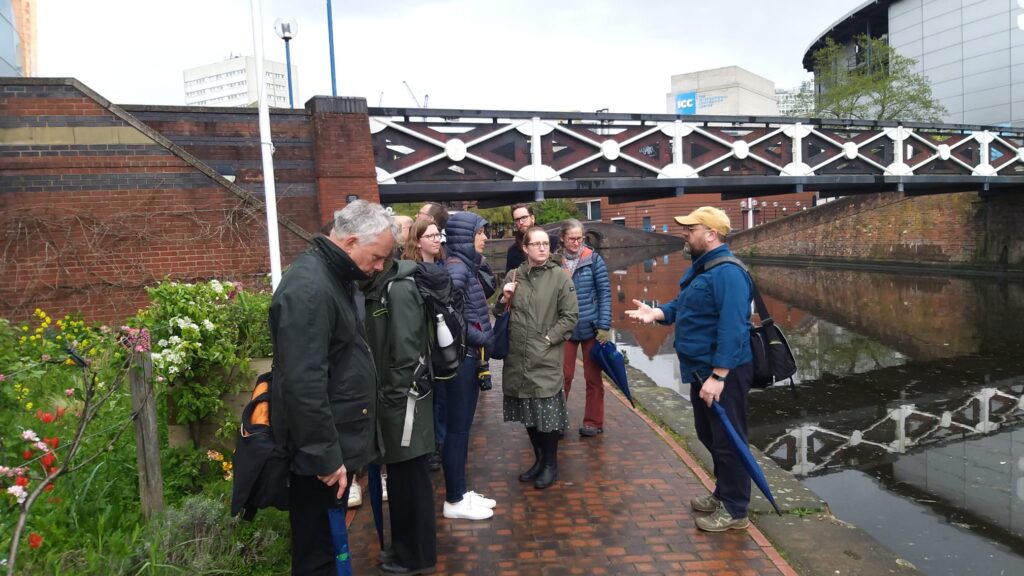
Jubilee Square, Leicester: establishing new green corridors to link Leicester’s historic buildings and heritage sites with the modern heart of the city. A surface-level car park was
transformed through tree planting that is designed to simultaneously act as Sustainable Drainage System, attenuating stormwater during high-intensity rainfall events:
North Street, Keighley: alterations to the road network in and around a historical town centre, driven by a local authority’s desire to alleviate traffic congestion, achieved additional benefits with the help of blue-green infrastructure. A new tree planting scheme along a redesigned section of a road contributes to the greening of the town whilst the trees clean the air. Faced with a combined sewer at capacity, the tree planting is concurrently utilised as a multi-functioning system for stormwater attenuation and as treatment pits for road runoff pollution:
GreenBlue is proud to support a number of stakeholders and academia, commending TDAG for an insightful day, educating on long-term tree health for now and our future generations.
